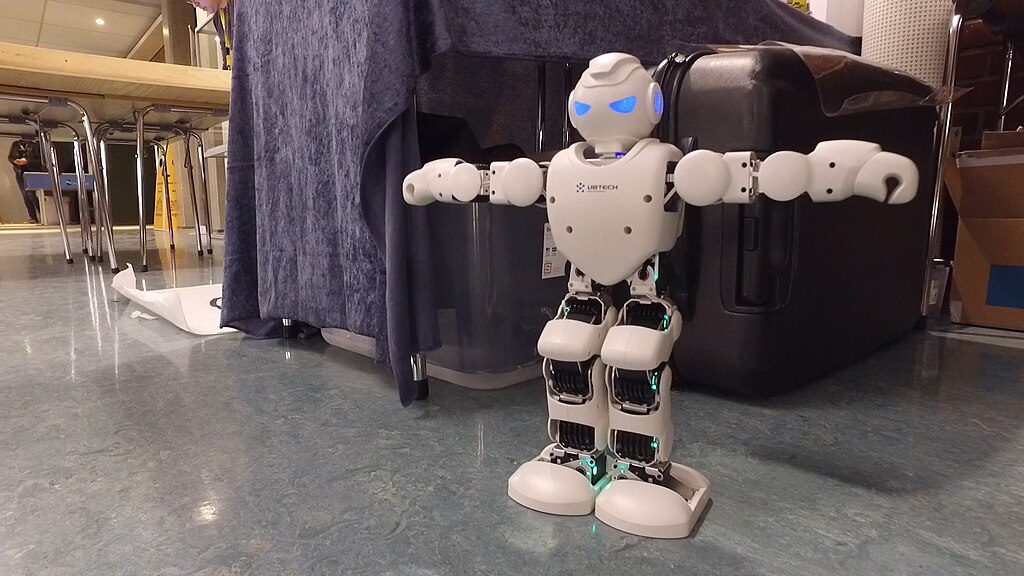In a Shanghai warehouse, Chinese startup AgiBot is training humanoid robots to perform everyday tasks like folding clothes and making sandwiches. Operating 17 hours a day, the site collects crucial data to enhance the robots' AI capabilities. This effort is part of China’s broader push to become a global leader in humanoid robotics, spurred by economic challenges such as population decline, trade tensions, and slowing growth.
President Xi Jinping’s recent visit to AgiBot highlighted Beijing’s commitment to advancing robotics as a pillar of its next industrial revolution. Backed by over $20 billion in government funding and an additional 1 trillion yuan ($137 billion) AI and robotics fund, the sector is rapidly scaling. Local governments are also contributing, offering subsidies, free workspace, and support for new data collection centers.
With China capable of producing up to 90% of humanoid robot components, domestic firms like Unitree, MagicLab, and UBTech are entering mass production. Robots are now being tested on factory floors for tasks like quality checks and material handling. The cost of humanoids is expected to fall from $35,000 to $17,000 by 2030, potentially driving mass adoption similar to the electric vehicle boom.
AI firms like DeepSeek, Alibaba’s Qwen, and ByteDance’s Doubao are helping power these robots’ “brains,” enabling real-world applications. While automation raises concerns about job displacement in China’s 123 million-strong manufacturing sector, the government is exploring solutions like AI unemployment insurance. At the same time, humanoid robots are being positioned to address labor shortages in elder care.
As China pushes to dominate humanoid robotics, its integration of data, AI, and supply chain efficiency could redefine global manufacturing and workforce dynamics.



 Evercore Reaffirms Alphabet’s Search Dominance as AI Competition Intensifies
Evercore Reaffirms Alphabet’s Search Dominance as AI Competition Intensifies  SoftBank Shares Slide as Oracle’s AI Spending Plans Fuel Market Jitters
SoftBank Shares Slide as Oracle’s AI Spending Plans Fuel Market Jitters  Trello Outage Disrupts Users as Access Issues Hit Atlassian’s Work Management Platform
Trello Outage Disrupts Users as Access Issues Hit Atlassian’s Work Management Platform  ADB Approves $400 Million Loan to Boost Ease of Doing Business in the Philippines
ADB Approves $400 Million Loan to Boost Ease of Doing Business in the Philippines  GameStop Misses Q3 Revenue Estimates as Digital Shift Pressures Growth
GameStop Misses Q3 Revenue Estimates as Digital Shift Pressures Growth  SoftBank Eyes Switch Inc as It Pushes Deeper Into AI Data Center Expansion
SoftBank Eyes Switch Inc as It Pushes Deeper Into AI Data Center Expansion  Microsoft Unveils Massive Global AI Investments, Prioritizing India’s Rapidly Growing Digital Market
Microsoft Unveils Massive Global AI Investments, Prioritizing India’s Rapidly Growing Digital Market  Intel’s Testing of China-Linked Chipmaking Tools Raises U.S. National Security Concerns
Intel’s Testing of China-Linked Chipmaking Tools Raises U.S. National Security Concerns  Apple App Store Injunction Largely Upheld as Appeals Court Rules on Epic Games Case
Apple App Store Injunction Largely Upheld as Appeals Court Rules on Epic Games Case  Trump’s Approval of AI Chip Sales to China Triggers Bipartisan National Security Concerns
Trump’s Approval of AI Chip Sales to China Triggers Bipartisan National Security Concerns  SpaceX Insider Share Sale Values Company Near $800 Billion Amid IPO Speculation
SpaceX Insider Share Sale Values Company Near $800 Billion Amid IPO Speculation  EssilorLuxottica Bets on AI-Powered Smart Glasses as Competition Intensifies
EssilorLuxottica Bets on AI-Powered Smart Glasses as Competition Intensifies  Westpac Director Peter Nash Avoids Major Investor Backlash Amid ASX Scrutiny
Westpac Director Peter Nash Avoids Major Investor Backlash Amid ASX Scrutiny  SpaceX Reportedly Preparing Record-Breaking IPO Targeting $1.5 Trillion Valuation
SpaceX Reportedly Preparing Record-Breaking IPO Targeting $1.5 Trillion Valuation  Samsung SDI Secures Major LFP Battery Supply Deal in the U.S.
Samsung SDI Secures Major LFP Battery Supply Deal in the U.S.  Adobe Strengthens AI Strategy Ahead of Q4 Earnings, Says Stifel
Adobe Strengthens AI Strategy Ahead of Q4 Earnings, Says Stifel  U.S.-EU Tensions Rise After $140 Million Fine on Elon Musk’s X Platform
U.S.-EU Tensions Rise After $140 Million Fine on Elon Musk’s X Platform 






























